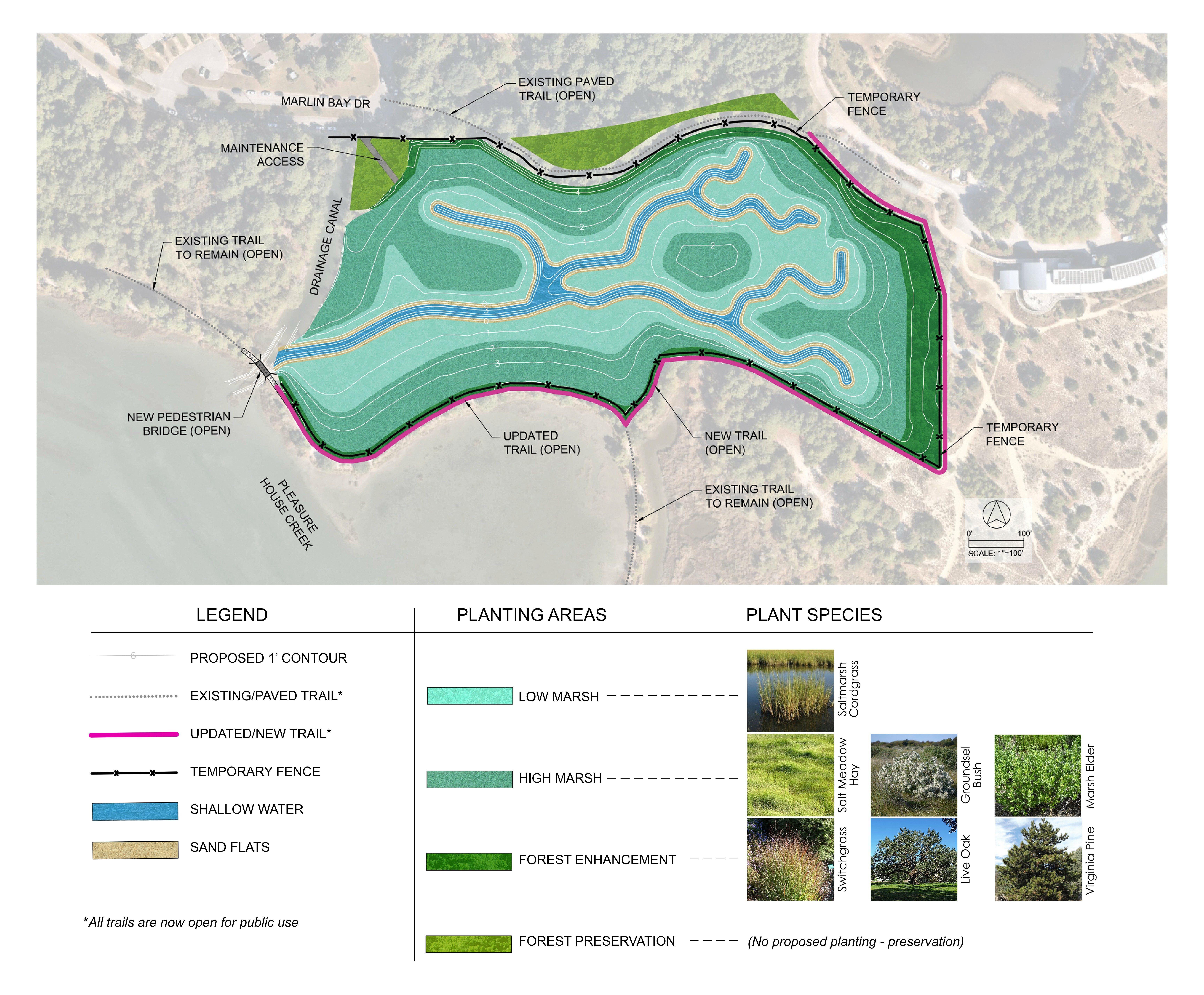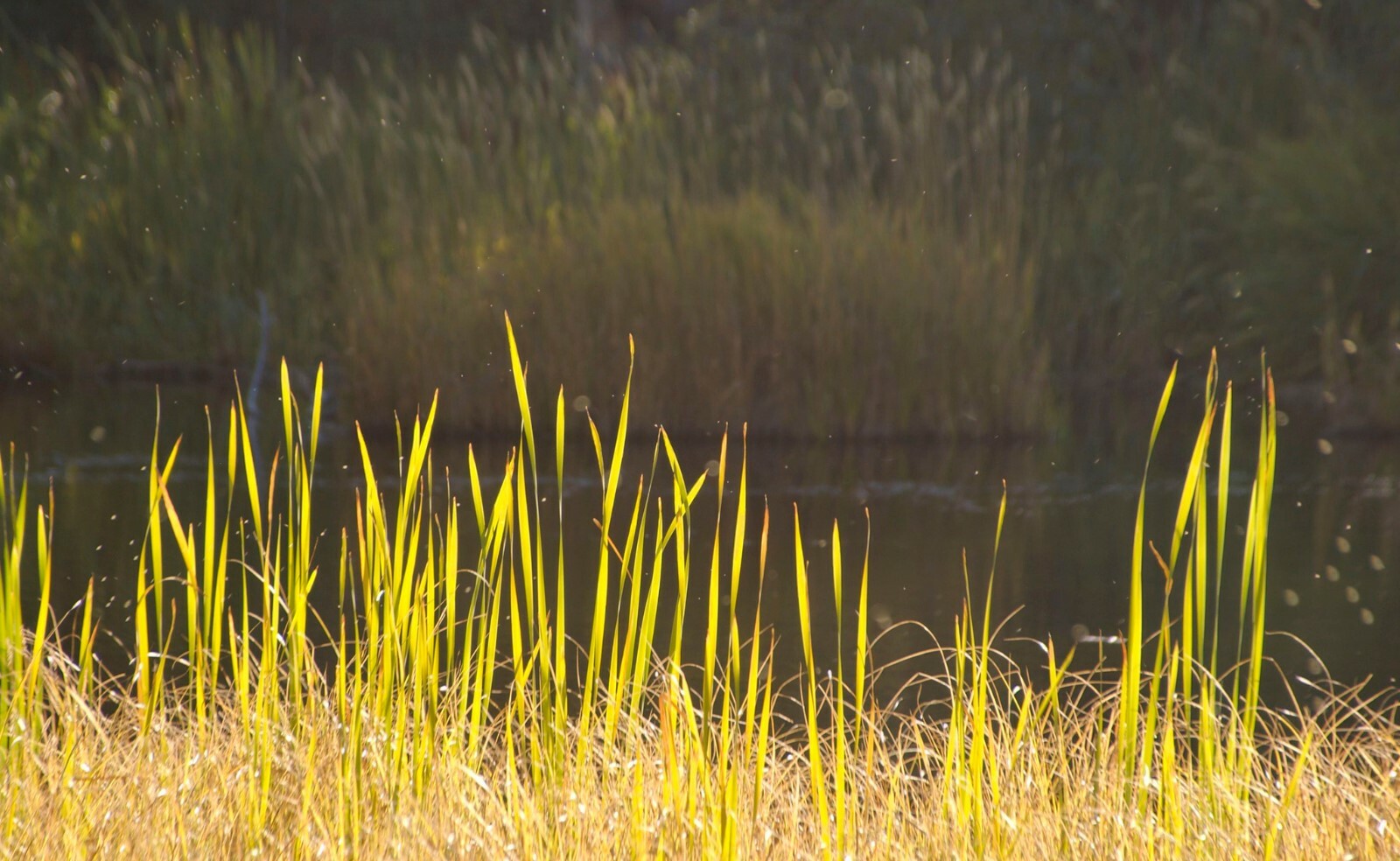
Pleasure House Point Wetlands Restoration Project
This project will return about eight acres back to its original tidal wetlands state, improving water quality and the health of the area’s ecosystem.

This project will return about eight acres back to its original tidal wetlands state, improving water quality and the health of the area’s ecosystem.
Thousands of wetland plants (high marsh and low marsh) have been planted along with over 1000 shrubs and almost 700 trees. With the cofferdam and pumps removed, the site's new channels are now naturally connected to the Lynnhaven River's tides.
By mid-December, the contractor is expected to begin improvements of the right-of-way adjacent to the site. Previously, this area experienced poor drainage. Work will include upgraded drainage in the bend on Marlin Bay Drive and paving enhancements for both pedestrians and drivers. Over the next year, City staff will maintain the restored wetlands and determine when the construction safety fencing can be removed.

Right now, the new plantings don’t look especially green, but don’t worry! They’re simply in a dormant stage – a resting period that helps plants survive the winter. Just like animals hibernate, plants conserve energy by storing nutrients in their roots. What looks like a bare stem is still alive below ground. When spring arrives, the longer days and warmer temperatures will trigger new growth.
The grasses planted at Pleasure House Point include:
This planting effort is about more than appearances. By spring, the grasses will begin to leaf out, strengthening the wetlands and supporting biodiversity. Over time, these plantings will help filter runoff and provide critical habitat for birds, fish, crabs and other wildlife.
The Pleasure House Point Wetlands Restoration Area will feature public trails within and alongside the wetlands and marsh. The area will provide a place for pedestrians and water recreation enthusiasts to experience the area’s rich biodiversity, both on land and in the water.
The Pleasure House Point Wetlands Restoration Project aims to restore eight acres of partially wooded land to its natural state of tidal wetlands. Natural tidal wetlands filter pollutants from entering our waterways, provide habitats for plants and animals, aid in flood protection, and contribute to the diversity of the unique area.
The project creates a sustainable solution for future City projects such as dredging, flood protection and roadway development, by mitigating wetlands usage and maintenance.
In addition to low lying wetlands grasses and plantings, over 600 trees will be planted including 336 live oaks and 192 water oaks.

Before the 1970’s, the area was partially wooded with a broad expanse of wetlands. Between 1971-1972, it’s estimated that over a million cubic yards of dredge material were placed over the wetlands, altering its natural state. In 2012, the City of Virginia Beach and partners preserved Pleasure House Point, protecting it from potential development.

Gain a stronger understanding of this important flood protection initiative that City Council approved on Jan. 7, 2025.

Discover how brown stems today will mean green growth in spring.
Project Milestone
Cost
Project Milestone
Design:
Cost
$430,000
Project Milestone
Construction:
Cost
$11,525,000
Project Milestone
Long-term monitoring:
Cost
$135,000
Project Milestone
Total:
Cost
$12,090,000
Project Milestone
Timeline
Project Milestone
Design:
Timeline
November 2024-February 2025
Project Milestone
Construction:
Timeline
March 2025-October 2025
Project Milestone
First year monitoring:
Timeline
October 2025-October 2026
Project Milestone
Tenth year monitoring
Timeline
October 2035-October 2036
Project Milestone
Long-term monitoring
Timeline
October 2036